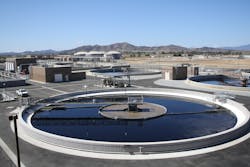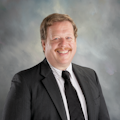Performance optimization and predictive maintenance go green
Just as it helps clients to optimize performance and production, Maverick Technologies works with them on sustainability by conducting feasibility studies that align with their goals, and employs loop-tuning, variable-frequency drives (VFD) and software-based tools to provide the most return on their investment. Increasingly, these tools are relying on predictive analytics, modeling, machine learning (ML) and artificial intelligence (AI). Maverick is a system integrator and Rockwell Automation company.
“In the past, sustainability was a secondary benefit, but now it’s more central to our customers’ strategy, and energy is crucial to those efforts,” says Alexandra Schwertner, sustainability technology and strategy leader at Rockwell Automation. “In fact, the International Energy Agency reported in 2021 that 40% of greenhouse gas (GHG) reductions will come from increased energy efficiency (www.iea.org/commentaries/how-energy-efficiency-will-power-net-zero-climate-goals).”
Seeking shorter lags, faster valve adjustments
For instance, Eastern Municipal Water District provides safe, reliable, economical and environmentally sustainable water, wastewater and recycled water services to nearly 1 million residents in 558-square-mile Riverside County, Calif. Its four reclamation plants treat about 48 million gallons of wastewater per day, but the district’s growing population and expanding service area have ramped up demands on it. The plants use aeration to remove impurities like organics and ammonia, but nearly half of EMWD’s electric bill goes to this dissolved oxygen (DO) process for biodegrading waste (Figure 1).
“The wastewater industry has struggled for a long time with aeration control and finding better ways to operate treatment basins,” says Matthew Melendrez, P.E., assistant GM for operations and maintenance at EMWD. “Process parameters change practically every minute of the day as flow rates and volumes of ammonia and organics fluctuate quickly, making it difficult to program a typical PID setpoint to hit its DO targets.” For example, setting targets too high requires more electricity to provide unnecessary air. Setting targets too low inhibits ammonia oxidation, which requires disinfection and more chlorine.
“We typically use a simple PID control system that slowly opens and closes the air valves as DO climbs or dips. Everything is reactive and feedback-based, and operators usually intervene daily to make manual adjustments,” explains Melendrez. “However, there’s a lag from when adjustments are made until we see results because the tanks are so large and conditions continue to change. All of this is hard for regular PID controls to handle, so it’s a big opportunity to improve efficiency.” In addition, better aeration performance would aid downstream processes, and let the plants improve disinfection and reduce chemical costs at the same time.
AI assists, accelerates controls
To help it proactively adjust its wastewater processes, EMWD recently asked Maverick and longtime supplier Rockwell Automation to develop and test an AI application that learns current aeration operating states, and optimally adjusts PID responses as conditions change with minimal staff intervention. Together, they piloted an AI-enabled control system at EMWD’s San Jacinto Valley reclamation facility that treats 7 million gallons of water daily. Plant staff installed an Allen‑Bradley CompactLogix 5480 controller on the existing automation network, and allowed it to interface with other processes as needed. Two Logix cores connect to the control system, while two other processors execute Rockwell Automation’s AI software, which controls air fed into the aeration basin by continuously monitoring and updating the PID response. The data is then used to adjust the air valves and oxygen delivered before the DO deviates too far from setpoint.
“Using ML, Rockwell Automation’s data scientists determined which wastewater flow and ammonia load have the biggest impact on oxygen performance,” adds Melendrez. “They built a model that was accurate at predicting DO demand for any given rate and load, and remotely programmed the AI software.”
Next, EMWD ran its classic PID control for one month followed by the AI-enabled control for another month to compare results. With AI-enabled control, EMWD reduced air delivered to the aeration basin by as much as 31%. The plant wasn’t just more successful at running the DO closer to setpoint, but also lowered its DO target. Better DO control also improved effluent quality with less ammonia bleed-through, reducing the need for disinfectants.
“It was exciting to see the plant’s controls go from not really functioning and regularly needing humans to take over to fully automated and providing improved performance, financial benefits and a reduced carbon footprint,” concludes Melendrez, who estimates improved DO control will reduce the plant’s energy consumption by 960 kilowatt hours (kWh) of electricity per day for $42,000 in annual savings. Also, lowering the DO setpoint will unlock daily electricity savings of 1,370 kWh, resulting in $60,000 in annual savings.
Clear goals, specific gains
To achieve similar gains, Mark Adair, project manager for systems automation at Maverick, adds the first step for any user or organization is developing a sustainability policy and procedures with clear guidance for its staff and other partners.
“We’ve seen lots of sustainability policies, and many lack an overall business strategy. What they need are realistic goals that are specific, measurable, achievable, realistic and time-based (SMART),” says Adair. “Second, a company’s objectives also have to align with its sustainability policy. If we say we’re going to reduce electricity and energy consumption by 25% during a certain period, then we need to measure where we’re at, and demonstrate specifics so other people will get onboard,” explains Adair. “Maverick has methods users can employ to reduce power consumptions, and Rockwell Automation has products for measuring it. These methods include using higher-efficiency motors, and adopting control strategies, software and PLCs. Third, personnel must also care about sustainability, and realize they can’t immediately switch over to wind farms and renewables. They must take smaller steps at first, generate some savings, leverage the most they can out of existing assets, and add more sustainability as they go forward. Sustainability isn’t just adding solar panel. It’s about people, the planet and profit, too.”
Sustainability series 2023
This article is part of the 2023 series on sustainability. Read more here
About the Author

Leaders relevant to this article:

